My Journey with Biblical Coins: Treasures of Faith and History
Introduction I’m Stephen Pfeil, President of Global Coin, and few things in numismatics stir my soul like Biblical Coins. These ancient artifacts provide a tangible connection to biblical events, illuminating the stories and significant moments described in the Bible. These...

Introduction
I’m Stephen Pfeil, President of Global Coin, and few things in numismatics stir my soul like Biblical Coins. These ancient artifacts provide a tangible connection to biblical events, illuminating the stories and significant moments described in the Bible. These ancient artifacts—silver shekels of Tyre, bronze widow’s mites, Roman denarii—are more than currency; they’re tangible links to the stories of the Bible, the life of Jesus, and the vibrant world of the Holy Land. At Global Coin, we cherish offering these sacred relics to collectors who share my reverence for their history and spiritual weight. Join me as I explore the essence of ancient Biblical Coins, the historical context of the Holy Land, notable rarities, collectibility, investment potential, market trends, varieties, and practical tips for acquiring these treasures, all woven with my personal connection to these coins of faith.
Introduction to Ancient Biblical Coins

My journey with Biblical Coins began when I first held a tiny bronze lepton, the “widow’s mite,” and felt its connection to the Gospel story (Mark 12:41–44). Ancient Biblical Coins offer a unique glimpse into the Holy Land’s history, with many coins mentioned, like the Roman denarius and Tyrian shekel, directly in Scripture. The denarius, known as the “tribute penny” (Matthew 22:19), and the shekel, tied to the “thirty pieces of silver” (Matthew 26:15), bring Biblical narratives to life. These coins are among those mentioned in the Bible, and their historical and spiritual significance is profound, as they connect us directly to the events and teachings described in biblical texts.
These coins, crafted in silver, bronze, and occasionally gold, reveal the economic, social, and religious practices of ancient civilizations. Silver shekels funded Temple taxes, while bronze prutot circulated in daily trade. Their use of precious metals reflects the value placed on wealth and devotion. Scholars often discuss how the specific coin referred to in these biblical stories—such as the Tribute Penny of Tiberius or the Widow’s Mite—can be identified, highlighting their importance in understanding the context of scripture. Collecting these coins is a rewarding hobby, with rarities like the Widow’s Mite and small silver coins like the Tribute Penny highly sought after for their spiritual resonance. The study of Biblical Coins, a cornerstone of Biblical archaeology, illuminates the historical context of Scripture, showing how Jewish, Greek, and Roman cultures intertwined. Many coins, especially Jewish and Greek issues, bear religious symbols—stars, anchors, or menorahs—offering a window into ancient spiritual practices that continue to captivate me.
Historical Context of the Holy Land

The Holy Land’s rich and complex history fuels my passion for its coins. Over centuries, empires like the Persian Empire, Greek, and Roman rose and fell, each leaving its mark on the region’s currency. Coins from this era, such as Tyrian shekels and Roman denarii, provide a unique perspective on events like the First Jewish Revolt (66–73 CE) and the Second Temple period (516 BCE–70 CE). The first coins appeared in the Persian period (5th century BCE), with silver darics and sigloi featuring precious metals that set the stage for later minting.
Archaeological excavations across Israel and Jordan have unearthed these treasures, revealing daily life in ancient markets and temples. Silver coins, like the Tyrian shekel, and bronze prutot, like those of Herod the Great, offer insights into trade, governance, and faith. Foreign currency played a significant role in ancient markets, with changing foreign currency practices influencing the development of local coinage as different empires and cultures interacted. Merchant cities like Tyre served as key trading hubs, facilitating commerce and coin production throughout the region. The “thirty pieces of silver” paid to Judas, likely Tyrian shekels used for paying taxes, underscore the coins’ role in pivotal Biblical moments. Civil taxes were often collected using these coins, highlighting their importance in official payments and the administration of government. Understanding the Holy Land’s history—its conquests, revolts, and spiritual fervor—is essential to appreciating these coins. Each one I hold feels like a fragment of Jerusalem’s ancient streets, where empires clashed and faith endured.
A Historical Tapestry of Faith
My fascination deepened when I held a Pilate pruta, minted during Jesus’ lifetime. Biblical Coins span from the Persian period to the Roman occupation (1st century CE), encompassing silver shekels and half-shekels of Tyre, used for the Temple tax (Exodus 30:13), and bronze prutot and lepta circulated by Jewish rulers like the Hasmoneans or Roman procurators like Pontius Pilate. The shekel of Tyre, struck from 126 BCE to 66 CE, was prized for its 94% pure silver (about 14 grams) and served as Judas’ infamous payment.
Bronze coins, like the lepton, were the currency of the common people, used in offerings and markets. Coins also played a role in social customs, such as the bride's dowry portion retained during wedding arrangements in biblical times. Holding a Pilate pruta, I imagine the bustling crowds of Jerusalem, where these coins jingled during the Crucifixion. They’re relics of a world shaped by faith, Roman rule, and Jewish resilience, connecting me to the Holy Land’s sacred past.
Designs That Echo Scripture

The designs of Biblical Coins captivate me with their raw artistry. The silver shekel of Tyre features Melqart, a Phoenician god, on the obverse, with a laureate bust and Greek inscriptions, typical of many roman coins. These coins bore images and symbols that reflected the cultural and political context of their time. The reverse shows an eagle on a ship’s prow, clutching a palm branch, with “TYRE THE HOLY AND INVIOLABLE” and Phoenician date numerals. Coins feature specific emblems and inscriptions that communicate religious or political messages. Despite its pagan imagery, its purity made it Temple-worthy, a fascinating cultural blend.
Bronze coins, like the widow’s mite, are humbler. Minted under Alexander Jannaeus (103–76 BCE), they bear stars, anchors, or lilies—Jewish symbols—with Hebrew inscriptions. Pilate’s prutot (26–36 CE) feature Roman symbols like a lituus (augur’s staff) or simpulum (ladle), inscribed with “TIBERIOU KAISAROS.” Some Roman coins from this period were bearing Tiberius bust, which is significant in the context of the Gospels. Their crude strikes—1–2 grams, 13–16 mm—reflect daily use. Greek-influenced coins, like those of Herod Antipas, often include reeds or palm branches, evoking spiritual themes. Each coin rendered its own message or symbolism through its imagery and inscriptions. Each coin I study feels like a verse from Scripture, linking me to the Holy Land’s soul.
Coins in the New Testament: Stories in Silver and Bronze

The New Testament is rich with stories where coins play a pivotal role, offering us a glimpse into the economic realities and spiritual lessons of Jesus’ time. One of the most memorable parables is that of the lost coin, where a woman diligently searches her home for a single silver coin out of ten—an act that underscores the value of even the smallest possession in the ancient world (Luke 15:8-10). This story not only highlights the importance of small silver coins in daily life but also reflects the care and persistence that defined the era’s household economy.
Throughout the New Testament, several coins are mentioned that help us understand the world in which Jesus Christ lived and taught. The Roman denarius, a silver coin bearing the image of the emperor, is perhaps the most famous. When Jesus was asked about paying taxes to the Roman Empire, he used the denarius as a teaching tool, famously saying, “Render therefore unto Caesar the things which are Caesar’s; and unto God the things that are God’s” (Matthew 22:19-21). This coin, a symbol of imperial authority, was central to commerce and taxation, and its presence in the Gospels brings the realities of Roman rule into sharp focus.
But not all coins featured in the New Testament were silver. The humble bronze coins—like the lepton and prutah—were the currency of the common people. The story of the poor widow who gave two small bronze coins, known as the Widow’s Mite, is a powerful reminder that generosity is measured not by the amount given, but by the heart behind the gift (Mark 12:42-44). These small bronze coins, though of little monetary value, have become enduring symbols of faith and sacrifice.
The Jewish people of the Second Temple period also minted their own silver coins, most notably the Tyrian shekel. These Tyrian coins, prized for their high silver content, were used to pay the annual temple tax—a religious obligation for pious Jews. Yet, the Tyrian shekel posed a dilemma: while its silver purity made it acceptable for the temple treasury, its design featured the image of the pagan god Melkart, challenging Jewish sensibilities about graven images.
Roman coins, especially the denarius, circulated widely across the Roman Empire, facilitating trade and daily transactions. The presence of such coins in the New Testament stories—whether in the hands of tax collectors, merchants, or ordinary citizens—reflects the interconnectedness of the ancient world. The seven coins mentioned in the New Testament, including the denarius, lepton, and prutah, each tell their own story. The King James Version renders these coins with familiar terms like “penny” or “farthing,” helping modern readers connect with the ancient text.
Some coins, like the thirty pieces of silver paid to Judas to betray Jesus, have become infamous, their legacy echoing through centuries of art and literature. Others, like the Widow’s Mite, are cherished for their humble origins and spiritual meaning. Biblical archaeology continues to uncover these ancient coins, deepening our understanding of the economic and religious life of the New Testament period.
In reflecting on these coins—silver coins, bronze coins, Roman coins, and Jewish coins—I am reminded of how tangible objects can illuminate the stories of faith, sacrifice, and redemption. Each coin mentioned in the New Testament is a small but significant piece of history, connecting us to the world of Jesus Christ and the enduring lessons of Scripture.
The Thrill of Collecting Biblical Coins

As a collector, I find Biblical Coins endlessly compelling. Their spiritual and historical weight makes them accessible yet profound, with prices from $50 for a lepton to thousands for a Tyre shekel. Building a collection around Gospel references, rare coin discoveri Herodian rulers, or Temple taxes is deeply rewarding. Key pieces, like a shekel from 20–30 CE or a Pilate pruta, are prized for their Biblical ties, while the Tribute Penny (Roman denarius) and Widow’s Mite draw collectors for their Gospel connections. Valuable coins with significant historical or spiritual backgrounds are especially sought after by collectors, making them treasured additions to any collection.
Condition and authenticity are challenges. Ancient coins vary in preservation, with fine to very fine grades commanding premiums. I’ve spent hours at auctions seeking a well-centered Tyre half-shekel, its eagle sharp. Varieties, like the “KP” monogram on Tyre shekels or overstruck Hasmonean prutot, or mint coins bearing unique designs add intrigue. The excitement of discovering an unusual coin with distinctive features or a rare history is unmatched. Each coin in my collection feels like a sacred relic, a bridge to the stories I read as a child.
Rare and Notable Roman Coins

The Bible’s coins are among the most coveted in numismatics, and I’m thrilled by their stories. The “thirty pieces of silver” paid to Judas Iscariot, likely Tyrian shekels, are highly sought after for their role in Jesus’ betrayal. Some scholars refer to these as thirty staters, connecting the term directly to the biblical account. These silver coins, with their Melqart and eagle designs, carry profound historical weight, with high-grade examples fetching thousands. Silver pieces like these play a significant role in biblical stories and were commonly used in trade and religious practices. The Widow’s Mite, a small bronze lepton, is another treasure; it was a small bronze coin, the least valuable denomination in Judea at the time, symbolizing the poor widow’s offering and offering insight into ancient economic disparities. The widow gave two coins, emphasizing the symbolic meaning of her gift.
The Tyrian shekel and Roman denarius, like the “tribute penny” of Matthew 22:19, are prized for their rarity and significance. Jewish coins, such as Hasmonean prutot, and Greek-influenced coins, like those of Herod Philip, feature unique designs—stars, menorahs, or palm branches—just like many greek coins that captivate collectors. Rarity and condition drive value; a choice very fine shekel or a well-preserved denarius can command premiums. Finding one feels like uncovering a piece of the Crucifixion or Sermon on the Mount.
Investment Potential: Relics of Enduring Value

As an investor, I see Biblical Coins as a unique asset: historical artifacts with spiritual and financial worth. Their value stems from rarity, condition, and cultural significance. A Tyre shekel in very fine condition might fetch $1,500–$5,000, while exceptional examples or those with provenance (e.g., from the Qumran hoard) can reach $10,000 or more. Widow’s mites trade at $50–$200 in decent grades, appealing to budget-conscious buyers, while Tribute Pennies in fine condition start at $500. Coins with unique historical backgrounds or provenance are of particular interest to both collectors and investors.
The market rewards quality. Coins graded by NGC Ancients or authenticated by David Sear in choice very fine or better appreciate steadily as supply shrinks. I’ve seen collectors build portfolios that double in value over a decade, blending passion with profit. Forgeries, especially of silver shekels, are a risk, so I urge buyers to choose reputable dealers like Global Coin, where authenticity is guaranteed. These coins offer a rare chance to own silver coins that represent history while hedging against economic shifts.
Market Trends in 2025
The market for Biblical Coins is vibrant in 2025. Growing interest in ancient numismatics, spurred by archaeological finds and religious tourism, drives demand. Tyre shekels and Pilate prutot lead, with a 30 CE shekel in choice very fine selling for $8,000 in 2024. Widow’s mites and Tribute Pennies remain accessible, starting at $50 and $500, but high-grade or provenanced examples are scarcer as collectors hold firm.
Online platforms like CNG and Heritage Auctions thrive, while coin shows attract new collectors drawn by the coins’ spiritual resonance. Modern replicas, like Israel’s 2023 Temple Tax coin, spark interest but lack the originals’ allure. At Global Coin, our curated Biblical Coin inventory reflects this enthusiasm, offering everything from affordable prutot to investment-grade shekels. The market’s fervor echoes the devotion of ancient Jerusalem’s pilgrims.
Notable Varieties: The Collector’s Quest
Chasing varieties in Biblical Coins is my favorite numismatic thrill. The Tyre shekel’s “KP” monogram, possibly tied to mint officials, is a coveted marker. Hasmonean prutot, like those of John Hyrcanus I, sometimes show overstruck designs, revealing minting errors. Pilate’s prutot vary by symbol—lituus or simpulum—with rare off-center strikes adding value. The “Year 2” pruta of Valerius Gratus (16 CE), with a palm branch, ties to early Roman rule. A Roman denarius with a clear Tiberius portrait, the likely “tribute penny,” is a Gospel gem. This coin is central to the famous speech by Jesus, "Render unto Caesar," a moment of great significance in biblical history. Many of these coins feature pagan imagery or Roman symbols, and pious Jews questioned the use of such coins due to their religious beliefs.
I once found a Tyre half-shekel with a bold “KP” at a London auction, its clarity thrilling me. These nuances, cataloged in Guide to Biblical Coins by David Hendin, turn collecting into a historical detective game. I encourage collectors to use a loupe and study hoard reports to spot rarities. Finding a variety feels like unearthing a Second Temple artifact.
Practical Tips for Acquiring Biblical Coins

My years at Global Coin have honed my approach to building a Biblical Coin collection:
-
Start Modestly: Begin with affordable coins like widow’s mites or Valerius Gratus prutot, priced $50–$150, to learn the market.
-
Prioritize Quality: For investment, seek NGC Ancients-graded coins in fine or very fine condition. Provenance adds value.
-
Target Key Types: Focus on Tyre shekels (20–30 CE), Pilate prutot, or Tribute Pennies for Biblical significance, even in lower grades. Tyre shekels were historically used to pay taxes, including the temple tax. In the Bible, Peter famously found a coin in a fish's mouth to pay the temple tax, and many scholars believe this coin was a Tyrian shekel.
-
Beware Forgeries: Silver shekels and denarii are faked. Buy from trusted dealers like Global Coin, and verify raw coins with experts.
-
Hunt Varieties: Use Hendin’s guide to spot “KP” monograms or overstruck prutot. A 10x loupe is essential.
-
Store Safely: Keep coins in archival holders, away from humidity, to preserve patina and condition.
-
Join the Community: Attend numismatic conferences, join the ANA, and engage online. Ancient coin enthusiasts share invaluable knowledge.
A Personal Connection to Scripture
Biblical Coins resonate deeply with me. Growing up, I was captivated by Sunday school tales of old testament stories and Jesus overturning the money changers’ tables (Matthew 21:12). Many biblical coins hold special significance because of their connection to a Jesus reference or a specific Jesus story, which deepens their spiritual meaning for collectors. Holding a Tyre shekel, I imagine it clinking in those changers’ hands. My first Biblical Coin, a widow’s mite gifted by my grandmother, sparked my numismatic journey. She said, “It’s small, but its story is mighty,” echoing the widow’s offering. At Global Coin, I’ve helped collectors find their own connections—a Pilate pruta for a pastor, a Tribute Penny for a Bible scholar, or a shekel to mark a Jerusalem pilgrimage.
These coins transport me to Judea’s dusty streets, where faith and empire collided. My collection, built over decades, is a testament to that world—each coin a whisper of the Gospels, from Bethlehem to Golgotha.
Conclusion: A Legacy of Faith
Biblical Coins are more than relics—they’re portals to the Holy Land, blending history, faith, and value. As President of Global Coin, I’m honored to share my passion with collectors worldwide. Whether you seek a humble widow’s mite, a majestic Tyrian shekel, or a Roman denarius, these coins offer spiritual depth and numismatic reward. With demand rising and authenticity paramount, there’s no better time to start your journey. Their ancient patina, tied to Scripture’s timeless stories, captivates heart and soul.
Explore our curated Biblical Coin selection at shopglobalcoin.com. Let’s embark on this sacred numismatic adventure together, uncovering the stories within each coin. What’s your Biblical Coin story? I’d love to hear it.
Related Articles
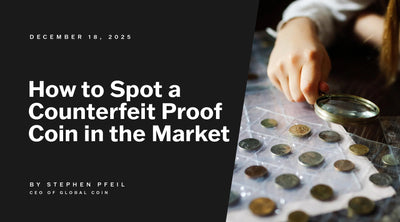
How to Spot a Counterfeit Proof Coin in the Market
How to Spot a Counterfeit Proof Coin in the Market In the world of numismatics, few things hold ...
Discover More
BREAKING NUMISMATIC NEWS: Large batch of 2025 Marine Privy Coins MELTED by U.S. Mint
BREAKING NUMISMATIC NEWS: Large batch of 2025 Marine Privy Coins MELTED by U.S. Mint A historic ...
Discover More
Tax Implications When You Sell Gold Bullion in Different States
Disclaimer: The following content is for informational purposes only and should not be construed ...
Discover More

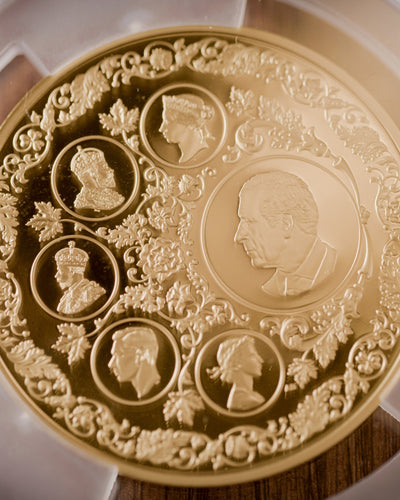
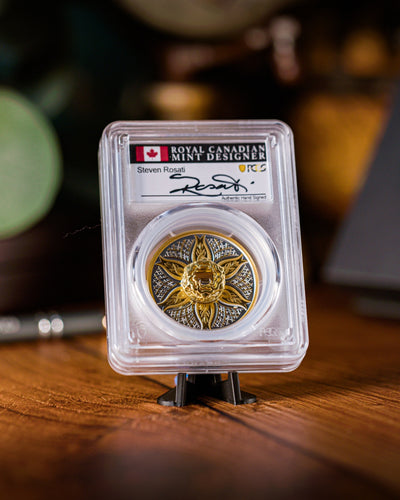
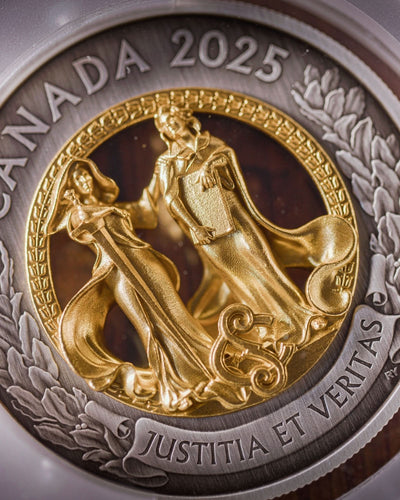
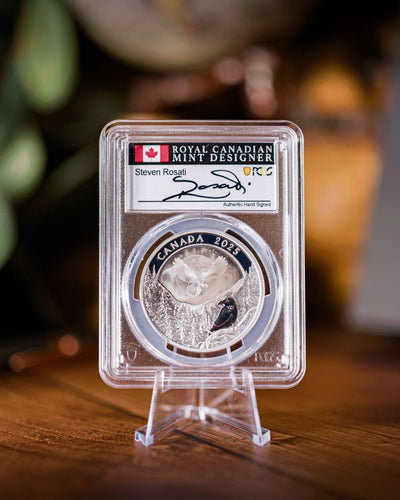
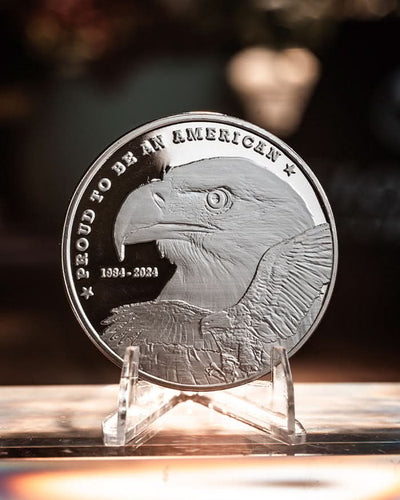
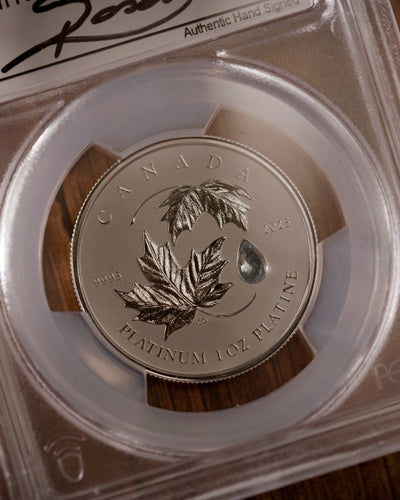
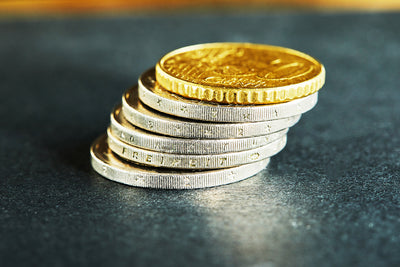
Leave a comment
This site is protected by hCaptcha and the hCaptcha Privacy Policy and Terms of Service apply.